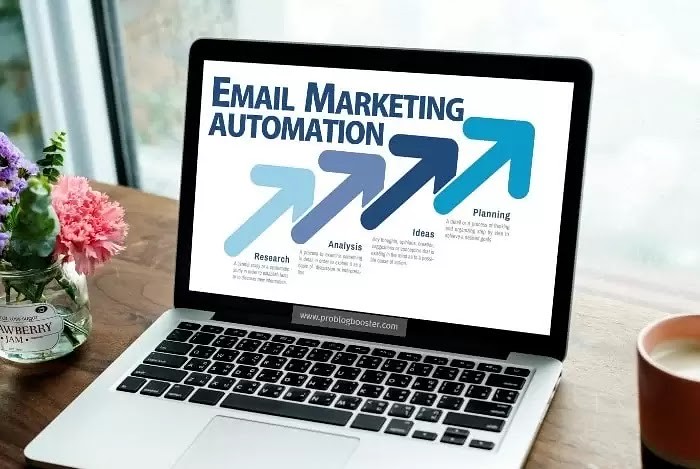Marketing is a multi-dimensional endeavor where there is no set path to tread upon and find your destination. There indeed is no set destination as well because the pursuit of success in any field, including marketing, is a journey.
To improve shopper’s buying experiences, retailers in 2019 invested a whopping $5.9B on AI-based marketing and customer service solutions. (~ IDC)
As a subset of AI, Machine Learning has become a hot topic of discussion in the technology meeting rooms and board rooms. Big Data, along with an increase in computing powers and internet speed, have made Machine Learning and the other progenies of AI incredibly powerful. These technologies are finding their application in almost every field in the market, with digital marketing being not alienated from the trend. In fact, digital marketing strategies that do not accommodate Machine Learning can be considered an impediment to success in the era of the 4th Industrial Revolution.
According to Gartner, by 2020, at least one of the sales processes for about 30% of the companies will be done through machine learning and AI.
Without further ado, let us enumerate nine aspects of Machine Learning that has revolutionized marketing:
Table of Contents
1. Divide and Rule
No, we are not talking about that imperialistic strategy of the 18th century. Interests and inclinations also divide people into different (harmonious) groups. Some people are eagerly waiting for the latest Games of Thrones season while there might be another exotic group still mourning Macbeth’s plight.
Unsupervised machine learning helps you to divide your customers into dynamic clusters based on their online behavior and preferences. Sounds easy, but millions of customers have billions of interest variables. Noting each customer’s social media activities and then generating a visual report that displays the various clusters into which the prospective customers fall requires something as formidable as machine learning. But once you have machine learning in your favor and the visual report at your disposal, you can easily target and engage your customers based on the segments they are falling in.
2. Regression – A Tale of Two Variables
Love stories? Some other time! Let us, for the time being, focus on the union of machine learning and marketing. Regression Models are an integral part of machine learning that can help marketers determine the dependent variable (say, price) based on the independent variable (pre-existing features). On a larger and more complex scale, regression models can be used in sales forecasting and optimizing resources. Many of the marketers use it for dynamic pricing.
Forbes says, by 2021, 57% of marketers will be using AI-based applications as compared to the 22% in 2018.
3. Do Not Play Disco for a Punk Rock Audience
Wearing a t-shirt on which it is inscribed “Obituary” to your ex’s wedding may be a daring feat, but in the world of marketing, if your content is not relevant, your atonement could be agonizing. Machine Learning algorithms can be leveraged to extract relevant content for the customers based on how they view and react towards a certain brand and its products.
4. Lost in Translation?
Globalization has broken the barriers due to geographical location. Enterprises today look at the whole world as their prospective customers. So, how will someone based in Germany digest your website content in the English language? Either through translation by human effort or by machine learning; the latter being highly efficient is desirable, but not wholly reliable. The best approach is to let the machine translate it, and human effort to review it.
5. Dealing with the Writer’s Block
A copywriter’s block precisely. Products, campaigns, and even companies are coming up rapidly in the market, pressurizing copywriters to create catchy names, exciting headlines, gripping tag lines, etc. Recurrent Neural Networks is one of the generative models that leverage machine learning to give conceivable names. Although mostly reliable, it can sometimes give some really peculiar names like RubLime for an antiseptic product, or Lady Jinx for a chiromancer! The best approach again is to let the machine create it, and human beings proofread it.
6. A Meaningful Conversation with Chatbots
Chatbots were created first in the 1960s, but till now, most of them say ‘thank you’ instead of ‘sorry’ and vice versa. The in-depth application of Natural Language Processing and machine learning can create efficient chatbots that are capable of engaging customers throughout the lifecycle of a product or service and appropriately escalate to human representatives if things go out of their hands.
Research says 79% of customers want prompt answers for their queries via live chats.
7. Fake it, if You Can’t Make it
Despite nearing middle age, premature balding, having an un-proportioned body, and wrinkled face, I honestly believe I am cute. But still, I would not risk using my photo in featured images on my website. Neither can I afford Robert Downey Jr. for a photo-shoot. Generative Adversarial Network (GAN) can come to my rescue. Consisting of a generator and a discriminator, GANs create ultra-realistic images of people who are not real but AI-generated. GANs are also used to generate voice and create logos.
8. Robots have Pampered Us
Man’s inclination towards lethargy led to the creation of robots. And today, we have stooped down so low that we want it to read our emails and analyze the attachments as well!
On a serious note, humanity blessed with the brain is meant to perform higher cognitive tasks leaving the redundant ones to automation. Robotic Process Automation leveraging machine learning minimizes the need for human involvement in manual activities, thus increasing productivity in a cost-effective manner that leads to the growth of revenue and ROI.
Forrester says, amount spend on marketing automation tool will reach $25 billion by 2023 with HubSpot, Marketo and Pardot making up about 50% of the share.
9. What You See is…Automated
They also can read images who cannot read words. That’s the power of visualization. And if we automate data visualization using machine learning and AI, we are transforming data into valuable visual insights not only fast but also effectively. Automated data visualization can bring into light several aspects that remain hidden beneath the numbers, such as market trends, customers’ behavior patterns, etc.
Conclusion:
Marketing is multifaceted, while machine learning is diverse. Although the application of machine learning has, by far, revolutionized marketing, beware of digital marketers who throw dust in the eyes of the populace claiming to use machine learning as a potion that cures all the afflictions.
These nine points will enable you to analyze what machine learning has to offer to your marketing. But first, you must ask yourself, “For which marketing tasks do I need machine learning?”





